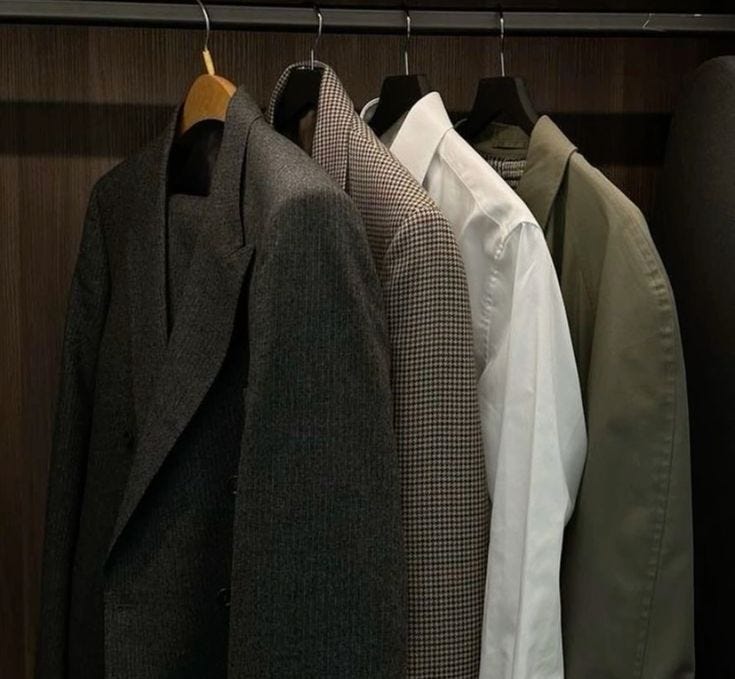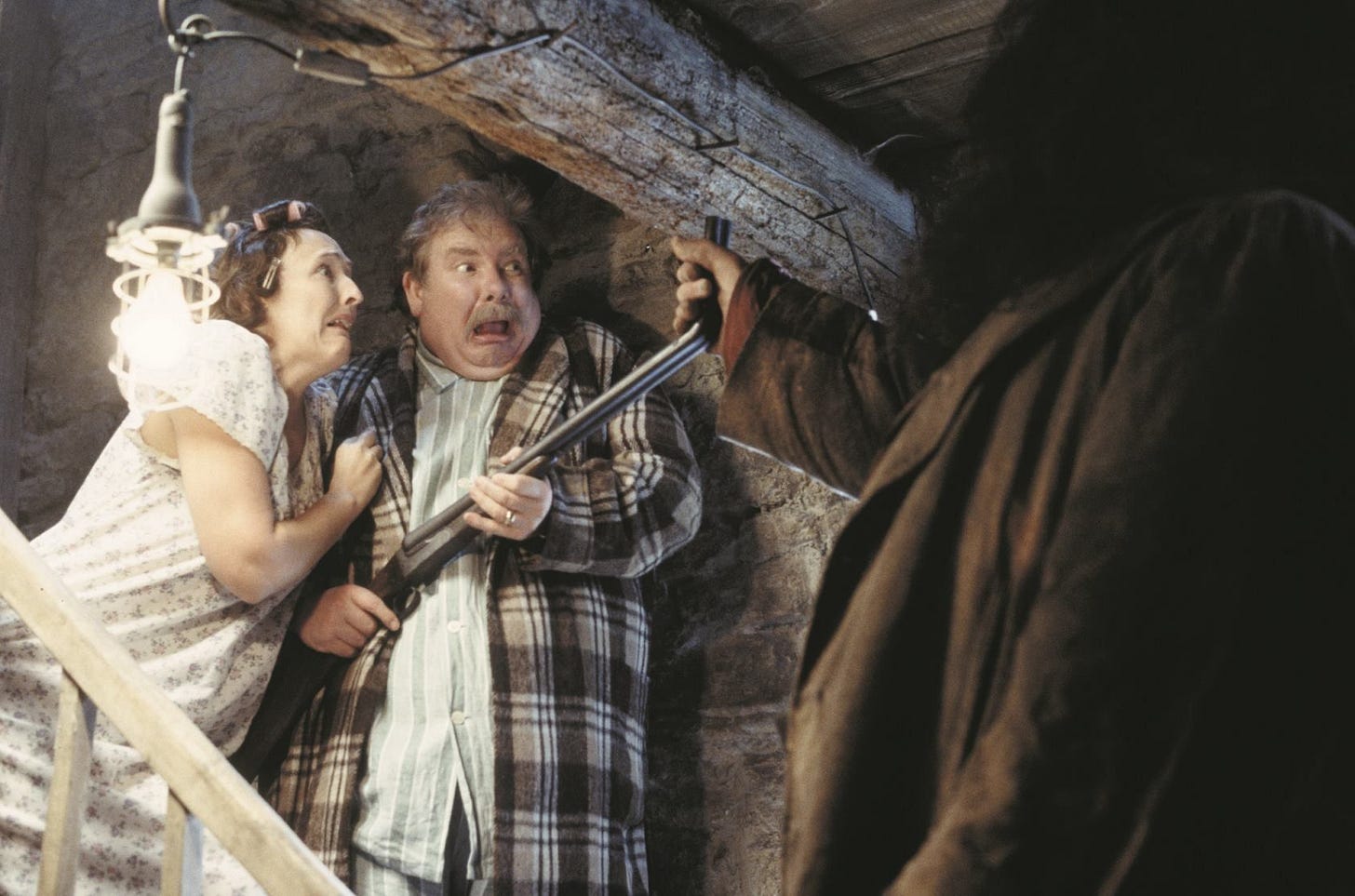The Eyes of the Herald: A Deep Dive on Physical Character Description
The Inheritance Games Chapter 4
We’ve made it to the Catalyst or the Call to Adventure! I love how The Inheritance Games takes an unexpected and strategic twist on the Herald archetype here.
Let’s dive in!
In this Analysis
The many purposes of the emissary from the special world
A masterful character inroduction
Using physical character description to illustrate change
Parts of a whole, Rule of Three, the 12 Stages of Physical Intimacy
Chapter Four. Or, You Can Rely on My Old Man’s Money
In class, Avery’s English teacher introduces proverbs. Then Avery is called to the office where a rich and powerful teenage boy named Greyson announces Avery has inherited money from a renowned philanthropist, they’ve been trying to reach her for weeks, and she needs to get on a plane to go to the reading of the will.
Desire: Greyson needs Avery to go with him to the reading of the will. Libby is his ally here.
Opponent: Avery, sort of. In that she doesn’t understand what’s going on, and then resists leaving.
Plan: Greyson’s direct plan is to summon Avery to the will reading by delivering the news in person. His indirect plan is to watch how she reacts, and to ask questions to try to understand why his grandfather included her in the will.
Battle: Avery spars with Greyson and Libby. Greyson has a powerful, overwhelming, authoritative effect that Avery tries to resist. She debates with Libby about whether or not to go along with Greyson’s plan.
Decision: Avery has to decide whether to go with Greyson to the reading of the will, or not.
New equilibrium: Avery agrees and she and Libby prepare to fly first class to Texas. They are clearly entering another world.
Value shift: The principal’s reaction to Avery physicalizes the value shift here.
“I also wasn’t expecting Mr. Altman to meet me at his secretary’s desk, beaming like he’d just had a visit from the pope.”
Avery doesn’t fully understand Mr. Altman’s reaction until the end of the scene, but previously he had all the power, now he’s deferring to Greyson and treating Avery like she’s someone important. At the beginning of this chapter, Avery says she’s wallpaper at school, that no one looks at her. By the end, she’s being flown to a rich, powerful family who desperately need her presence.
Invisible → Noteworthy, or even pivotal.
Foreshadowing
The first scene of this chapter — in English class — is so short, it’s almost throwaway. I think the purpose is to establish what proverbs are (it gives the literal definition) and to establish that Avery knows a lot of them.
An establishing set-up scene like this could be boring in other hands…but here, I think the scene works because it’s so short. We catch our breath, and then we’re off again, no pacing disruptions.
The scene might even be shorter than this paragraph analyzing it ;)
Description: Emissary from the Special World
Using ‘Writer’s Journey’ language, in this chapter we have a herald (Greyson) from the extraordinary world (the wealthy Hawthornes) arriving in the ordinary world (Avery’s high school). It’s the equivalent of Gandalf in Hobbitville or Hagrid meeting the Dursley’s.
Contrast is huge here. Even in a non-fantasy story, the herald should be remarkable, giving a hint of what the special world will be like. We want them to stand out. We want them to be entirely different from what the protagonist knows and expects of her life.
Let’s see how Jennifer Barnes does it, through examples of her Greyson descriptions:
“The chair behind the principa’s desk was occupied — by a guy not much older than me.”
This is our first look at Greyson. Notice how it’s very macro: we get his position in the room, his age. This initial description is not particularly arresting, but still evokes some curiosity: why is a young person sitting in the principal’s chair?
This is a golden character introduction. Barnes utilizes the most basic orientation to convey character information: Greyson sits in the most powerful position in the room, so we immediately get a sense of his power and status.
We also get the sense that the power dynamics have been disrupted (already hinted at by Altman’s reaction to Avery): where Mr. Altman used to have the authority, now this guy does.
“He was wearing a suit. He looked like the kind of person who should have an entourage.”
One of my favourite ways to define my characters is by finishing the sentence: “They’re the kind of person who…”
This is a great way to introduce a new character: show the assumptions the MC makes about them in their interiority. We’re constantly comparing and grouping people together in our minds, as well as (however unconciously) trying to figure out who has the highest status when we enter a room. This beat gives a great visual and a touchpoint for us to hold onto.
“I tried not to stare at him — and failed. Light hair. Pale eyes. Features sharp enough to cut rocks.”
We’re zooming into him closer now with this description.
The second sentence uses the Rule of Three, which I talk about in this video on line editing.
It comes from information processing theory: human brains need at least three things in a set to recognize patterns between those things. Because three is still a small number of things to remember (we can remember 5-7 distinct items on a list at a time), people better understand concepts and ideas in groups of three.
The Rule of Three can be used in many different ways in storytelling. The example sentence uses an AAB structure. The first two elements of the set share some similarity — and the third element deviates from it.
Like, “girls are made of sugar and spice and everything nice”:
Ingredient, ingredient, generalization.
1 syllable, 1 syllable, 4 syllables.
Similarly, Barnes uses metaphor and rhythm within the Rule of Three to create impact.
“Light hair. Pale eyes. Features sharp enough to cut rocks.”
Concrete. Concrete. Metaphor.
2 syllables. 2 syllables. 8 syllables.
“His eyes were the same color as his suit - gray, bordering on silver.”
In this scene, Barnes grounds the description of Greyson in two things: his suit and his eyes. In nearly every line of description, every one of his action beats, one of these is mentioned.
This technique helps ground the description: we don’t need to know every detail of how he looks. Frankly, we won’t remember. We’re focusing in on two elements and seeing how they evolve throughout the scene.
In the above sentence, she links them together. By describing his eyes in relation to the suit (a status symbol), calling them silver, she’s emphasizing his privilige, his extraordinariness in this situation.
I don’t know if Greyson will be a love interest…but with silver eyes? I’d be surprised if he wasn’t.
“I turned to look at her, grateful for an excuse to look away from Gray Eyes and fighting the urge to glance back.”
Another emphasis on the eyes.
Also, fully love the technique of calling a character whose name we don’t know by a physical characteristic: “Gray Eyes.” Much better than “the boy” or “the guy in the chair.” It has a brashy voiciness to it.
“…, silver eyes focused on mine, the ends of his lips ticking upwards.”
“He folded his hands on the desk between us, the thumb of his right hand lightly circling the cuff link on his left wrist.”
Notice how zoomed in we are now: no longer looking at the whole, but the parts: silver eyes, ends of lips, thumb of hand, cuff link of suit. We went from “boy in chair” to describing how his hands are folded. Zoomed out, to zoomed in.
“His eyes lingered on mine too long for comfort, and then, without another word, he strode out the door.”
Before Greyson leaves, we zoom in on the eyes again, this time in relation to Avery.
There’s no way this guy isn’t a love interest.
In The Twelve Stages of Physical Intimacy, which Linda Howard adapted from Intimate Behavior: A Zoologist's Classic Study of Human Intimacy (1971) by Desmond Morris1, the first two stages are:
Eye to body. (Sizing up.)
Eye to eye. (Making eye contact. Although “a fixed gaze can also be viewed as threat behaviour,” which is handy as it leads to tension!)
Lingering eye contact?
Please. Locking in my love prediction now.
Next Week
See you in Chapter Five! This analysis is of the opening sequence, leading up to the reading of the will and the discovery of Avery’s inheritance!
This is a helpful resource but do be aware, if you look it up, that it feels very 1970s.
Exhibit A: “The woman walks into the room. The man looks at her and decides if she's someone who appears to meet his criteria.”
Um, okay.
Since it’s based in animal instinct, the criteria it’s referring to are things like ‘likelihood to bear healthy children.’ Still, I find this resource a bit jarring, not reflective of the equal, non-heteronormative, non-patriarchal partnerships we want to read about today. Regardless, the instictual perspective it brings has value, especially in establishing attraction.






